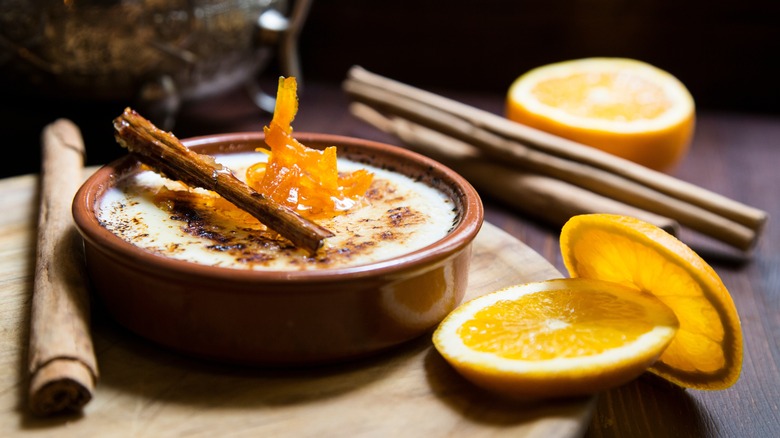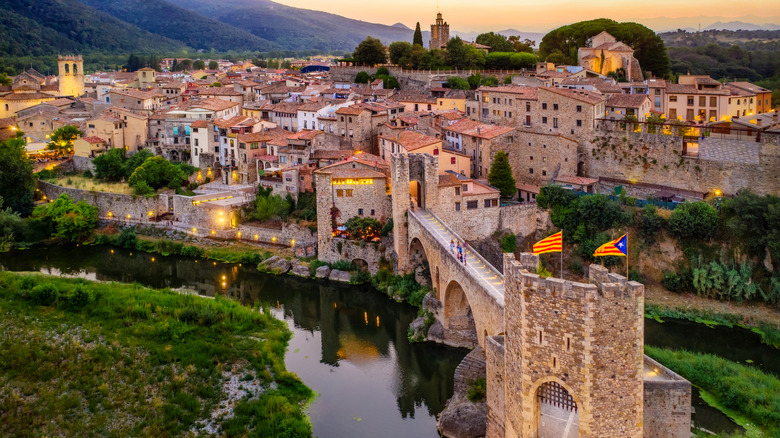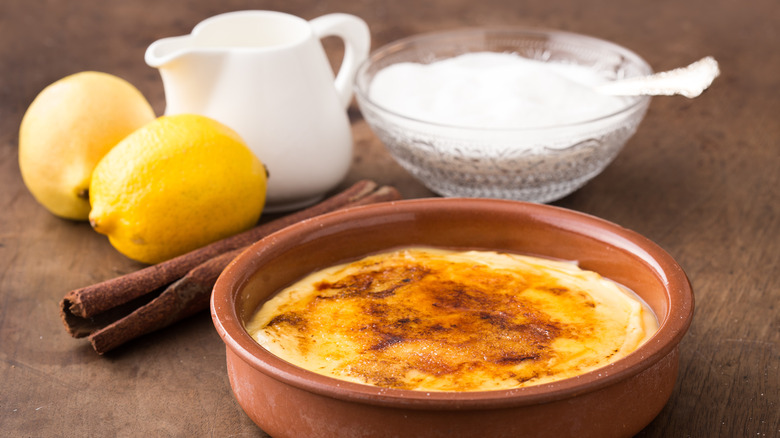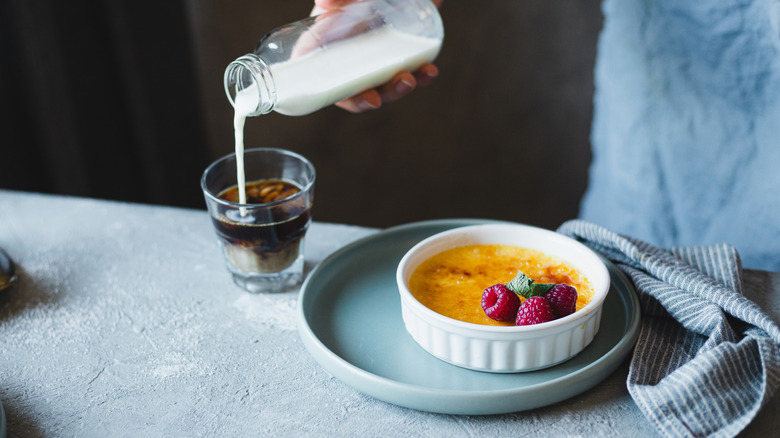Crema Catalana: Crème Brûlée's Lighter, Citrusy Cousin
The Catalonian region of Spain encompasses a triangular section of land in the northeastern part of the country, bordering France, the state of Andorra, and the Mediterranean Sea. This area boasts the famed city of Barcelona, the picturesque Costa Brava, and the stunning Pyrenees mountains, as well as a dynamic and delicious cuisine that includes the dessert crema Catalana.
This custard-based treat is regularly mistaken for crème brûlée. While it may look similar to the French favorite, crema Catalana uses different ingredients, and historians believe it came along well before crème brûlée was invented. The first known recipe for the Spanish dessert was printed in the 14th century, while crème brûlée made its first printed appearance in 1691.
Lighter in texture and flavored with cinnamon and citrus, as opposed to the more neutral vanilla, crema Catalana is considered the official dessert of Catalonia, and is traditionally served on St. Joseph's Day on March 19th. Not only is it Spain's oldest dessert, but it's possibly one of the oldest European desserts in recorded history.
Crema Catalana has roots in the Middle Ages
Like most dishes that originated hundreds of years ago, the details of crema Catalana's creation are murky. Some believe the confection was developed by Catalonia's early Jewish community, who created a sweet custard from milk and eggs. They flavored the dessert with cinnamon and lemon, two ingredients that were brought to the region by the Moors upon their invasion of the region in 712.
Another widely-believed tale gives credit for the dessert to nuns of a Catalonian convent. They had prepared flan for a visiting bishop, but upon discovering that it hadn't fully set and was still largely liquid, they covered the top with burnt sugar. It's also believed that crema Catalana was influenced by various English custards dating back to the Middle Ages.
The first recipe for crema Catalana was recorded in the year 1324 in "Libre de Sent Sovi," one of the first European culinary documents that was written in the Catalan dialect. Another early recipe can be found in "Libre del Coch," which was originally printed in 1520. It detailed how the sugar on top of the cream was burnished using a hot iron rod. A modern kitchen torch is used today, much like in crème brûlée.
Don't mistake it for crème brûlée
Crema Catalana is made by making a custard of egg yolks, sugar, cornstarch for thickening, and milk that has been infused with cinnamon sticks and lemon peel. The egg yolks are essentially cooked by the heat of the warmed milk, and then dishes of the mixture are chilled until firm. Right before serving, the top of each custard is sprinkled with sugar and then caramelized or "burnt" to create a crackly, sugary layer.
As previously mentioned, this step was traditionally done with a pala, a flat iron tool that is heated over a fire and then stamped onto the crema to cook the sugar. It's completely acceptable (and much more convenient) to use a kitchen torch or an oven broiler to create the same result today.
The burnt sugar top is what makes crema Catalana so commonly mistaken for crème brûlée. However, crème brûlée is made with heavy cream, which makes it noticeably richer than crema Catalana, and the French classic is flavored simply with vanilla. While crema Catalana is simply chilled and then burnished, crème brûlée is baked in a water bath in the oven. Some agree that crema Catalana is also less sweet than its French counterpart, making it a slightly lighter dessert that is creamy yet refreshing with its citrus notes.
Delicious ways to serve crema Catalana
Crema Catalana is popularly served on St. Joseph's Day, which is also when Spain celebrates Father's Day, or Día del Padre. With that said, it's still popularly eaten year-in Catalonia. This sweet is perfect with a cup of coffee, and even better when you add a little lemon oil to your brew to compliment the citrus in the dessert. Without having to fuss with the oven or water bath that crème brûlée requires, making crema Catalana might be much easier for home cooks.
If you try a basic recipe and enjoy it, get creative with flavorings and toppings. Feel free to add some orange peel along with the lemon to flavor the custard, and garnish the finished dessert with fresh berries, candied citrus, a sprinkle of cinnamon sugar, or a sweetened rhubarb compote, whose sour flavor would be delicious with the creaminess of the custard. For a festive treat (perhaps when celebrating Father's Day in your own country), serve crema Catalana with a sweet Spanish sherry or other liqueur to make your dessert course truly memorable.




